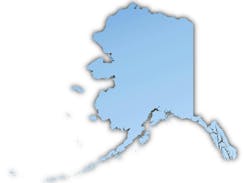Interior retains protections on Alaska public lands eyed during Trump administration
The US Interior Department retained protections on 28 million acres of D-1 public lands in Alaska Aug. 27, reversing a Trump-era bid to allow oil and natural gas leasing on the land.
The decision reverses orders signed late in Trump’s administration to allow industry use of the land. One of the Biden administration’s first actions upon taking office was to pause those orders and undertake an environmental review to evaluate potential effects that lifting the protections would have on fish and wildlife habitat, subsistence resources, and Alaska Native communities who utilize the lands for subsistence hunting and fishing.
“Today’s action comes in response to the previous administration’s unlawful decision in its final days to end the longstanding protections (known as withdrawals) without sufficient analysis of the potential impacts of such a decision on subsistence and other important resources, appropriate Tribal consultation, and without compliance with other legal requirements,” Interior said in a release. “This sweeping action would have opened millions of acres of public lands to extractive development activities, such as mining and oil and gas drilling, and removed the federal subsistence priority from millions of acres.”
Congress in 1971 authorized protections from mineral and oil and gas development under the Alaska Native Claims Settlement Act. D-1 lands, named after a section of the act, are administered by Alaska’s Bureau of Land Management (BLM), a division of the Interior Department.
The lands retaining protections crisscross Northwest, Southwest, Southcentral, and Southeast Alaska, and include BLM’s Bay, Bering Sea-Western Interior, East Alaska, Kobuk-Seward Peninsula, and Ring of Fire planning areas.
Interior said it conducted 19 community meetings on the proposal and heard “overwhelming support” for protecting the land, particularly by Alaska Native groups. It noted that BLM received about 15,000 public comments on the draft Environmental Impact Statement (EIS).
BLM’s final EIS found that revoking protections and allowing mining and oil and gas development would harm subsistence hunting and fishing in communities and that lifting all or some of the protections could have lasting negative impacts on wildlife, vegetation, and permafrost.
About the Author
Cathy Landry
Washington Correspondent
Cathy Landry has worked over 20 years as a journalist, including 17 years as an energy reporter with Platts News Service (now S&P Global) in Washington and London.
She has served as a wire-service reporter, general news and sports reporter for local newspapers and a feature writer for association and company publications.
Cathy has deep public policy experience, having worked 15 years in Washington energy circles.
She earned a master’s degree in government from The Johns Hopkins University and studied newspaper journalism and psychology at Syracuse University.
